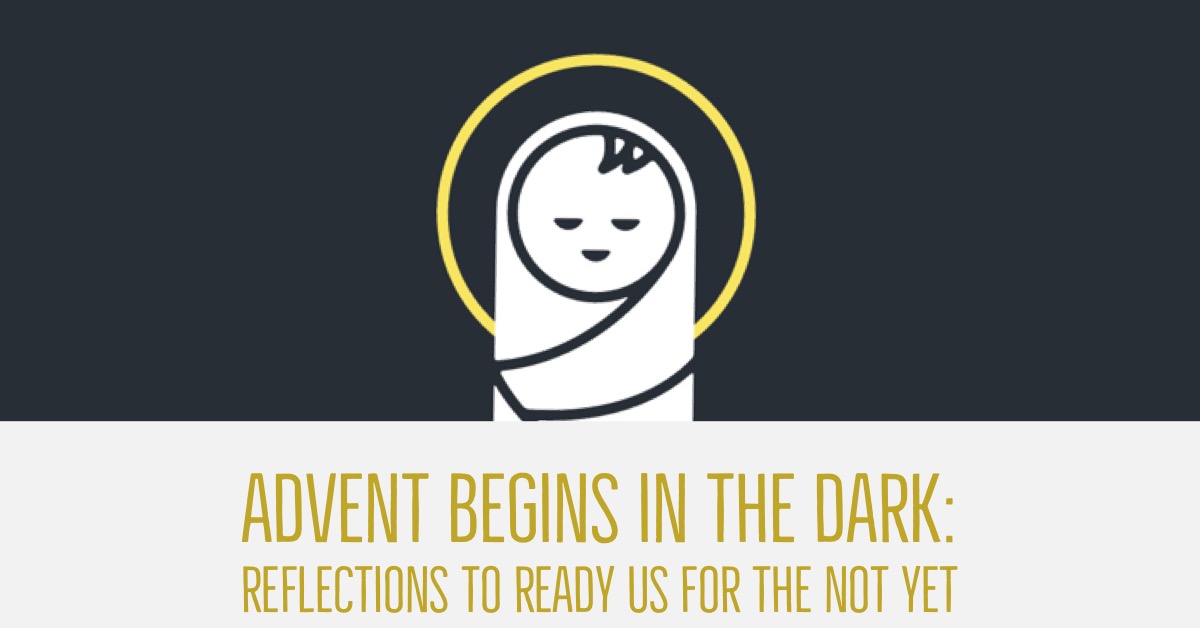
A nativity is up already in the narthex, strewn with artful straw and friendly beasts, shepherds and the maker of the world, measuring in inches and ounces, laying in a manger.
It’s a testament to St. Luke’s skill that we know his story and its characters so well— the dumbfounded, dung-covered shepherds, the angels bearing their gospel tidings, the census levied by Caesar and the journey undertaken by Joseph and his self-possessed new wife. Perhaps it reveals St. Matthew’s dearth of narrative skill that we confuse his nativty with Luke’s own story, setting the magi at the manger weeks too early— the star the follow ocassions his birth.
And we fix a place for the monster, King Herod, nowhere near the manger at all.
Nor do set any of his innocent-slaughtering stormtroopers anywhere on the stage.
In some circles, the Christmas story is read on no other plane but the sentimental, from which we derive partial— possibly empty— principles.
See, we say, God knows what it’s like to be one of us, naked and vulnerable in world. Look, God loves us so much as to come down and become one of us.
It’s all true, of course.
It’s just not complete nor is it sufficient to the tale the entire New Testament— not just the nativity stories— want you to see.
In other circles, the costuming of the Christmas story is peeled back to reveal the “real,” socio-political, anti-imperial story going on behind the story.
To paraphrase Feuerbach:
The theological wrapping paper of the Christmas story becomes but a way for us to speak our politics in a God-sized voice.
Not only does the holy family become an asylum-seeking refugee family in Egypt, we note, their son becomes a New Moses who will deliver his people from a New Pharaoh, bringing down the proud and the powerful from their thrones.
Again, it’s all true.
It’s just not real enough, in terms of the New Testament’s witness, to be the real story behind the story.
What’s missing from our mangers isn’t Herod or his shock troops, a proper chronology or Caesar sitting off on a throne in the distance.
Both our modernist sentimentalized distillations of the nativity story and our (regressive) progressive political interpretations of the Christmas tale are too flat. They’re both insufficiently cosmic. Neither are three-dimensional enough to do justice to the why of Christ’s coming as the New Testament understands it.
What’s missing from our manger scenes is the Enemy.
And— this may be a helpful word in our current cultural moment— the Enemy is not Herod or Caesar or any of their stormtroopers or supporters.
As Fleming Rutledge notes again and again in her writing, the New Testament is unanimous on this point:
“When Christ comes in to our world, he enters occupied territory.”
When the Father’s Son enters the Far Country of Sin and Death, he comes to a realm under the reign of an Enemy.
The Enemy.
It’s a Christmas story, it’s just not a nativity story. There’s a story later in Luke’s Gospel, chapter 13, where a daughter of Abraham has been bound by Satan for 18 long years, and we expect to discover that what’s really going on here is that Christ has healed her of an inexplicable paralysis. Even if demons and devils, spirits and Satan, are just myths to you, even if you don’t think they’re real, that doesn’t change the fact that Jesus did. “This woman is a daughter of Abraham whom Satan [with a capital S no less] has bound for 18 long years.” Go back and look at the text. That’s not the Pharisees attributing Satan to her paralysis. That’s not the Chief Priests saying she’s been bound by Satan. That’s not the disciples or Luke implying it. That’s red-letter.
That’s Jesus saying that whatever has ailed this woman is because Satan has bound her in his captivity, and you don’t need me to point out that Jesus wouldn’t have bothered to say that if it wasn’t also true, in less obvious ways, about all the rest of his listeners.
Which, includes us.
When you leave the Enemy missing from the manger, you leave off too much of the Gospel too.
Call it what you will:
The Devil
Death, as Paul does in Romans
The Principalities and Powers or the Ruler of the Spirit of the Air, as Ephesians does
Satan, as Luke says here
Lucifer, the Prince of Darkness, or the Adversary, as Jesus does elsewhere
Call it what you will, the sheer array of names proves the point: the Devil— not the Herods and Caesars of any age— is the narrative glue that holds the New Testament together.
The language of Satan so thoroughly saturates the New Testament you can’t speak proper Christian without believing in him. Even the ancient Christmas carols most commonly describe the incarnation as the invasion by God of Satan’s territory while the most common nativity image in art is that of the Christ child wielding a cross in his hand— like its a weapon.
Whether you believe Satan is real is beside the point because Jesus did and the New Testament does. To pull off the Christmas costumes and insist that something else is going on behind the story is to ignore how Jesus, fundamentally, understood himself and his mission. It’s to ignore how his first followers- and, interestingly, his first critics- understood him. The Apostle John spells it out for us, spells out the reason for Jesus’ coming not in terms of our sin but in terms of Satan. John says: “The reason the Son of God appeared was to destroy the Devil’s work.” And when Peter explains who Jesus is to a curious Roman named Cornelius in Acts 10, Peter says: “God anointed Jesus of Nazareth with the Holy Spirit and with power…to save all who were under the power of the Devil.” When his disciples ask him how to pray, Jesus teaches them to pray “…Deliver us from the Evil One…”
You can count up the verses.
More so than he was a teacher or a wonder worker. More so than a prophet, a preacher, or a revolutionary, Jesus was an exorcist. And he understood his ministry as being not just for us but against the One whom he called the Adversary. This is why our reductions of the Christmas story are true-ish but ultimately incomplete. Put baldly: if there’s no Devil, there’s no Gospel.
According to the New Testament, our salvation is not a 2-person drama.
It’s not a 2-character cast of God (in Christ) and us.
According to scripture, there is a third agency at work in this story— and in our world— against whom God-in-Christ contends. We’re not only sinners before God. We’re captives to Another. We’re unwitting accomplices and slaves and victims of Another. And even now, says scripture, the New Creation being brought into reality by Christ is constantly at war with, always contending against, the Old Creation ruled by Satan. And the battlefield runs through every human heart.
Obviously, I realize that likely sounds superstitious to many of you. If so, I’d encourage you to ask someone suffering an addiction if they think the Bible’s language for Sin-with-a- capital-S is fantastical. They’ll tell you what it’s like to be captive to some other Power, who is not God. What addicts experience is the same agency splayed out all over our news every day— the suffering and poverty and violence, the oppression, the hate, and the exploitation.
When the Enemy is missing from our mental mangers, what winds up missing from the Christian on our lips is mercy.
The problem with the partial political renderings of the Gospel story— the ones that make Herod or Caesar or empire the villains against whom Christ has come to contend— is that they fail to account for the New Testament’s witness that even a Herod or a Caesar is held in the grip of Sin and Death. Or rather, as people who know the Power of Sin and Death is not fake news, Christians are able to see themselves— there but for the grace of God— in Herod or Caesar’s shoes.
As Fleming Rutledge preaches:
“Evil is loose in the world and can take anyone, anywhere, at any time— but the proud and the self-righteous are especially vulnerable…Providence is ceaselessly working to defeat the Enemy…But here is the point: we are all just as susceptible to the Enemy as anyone else…The Enemy, you see, is too strong for us.”
All of us live in occupied territory.
The Pharoah called Sin and Death— Satan— can harden even the best heart. Not one of us is ‘evil’ or ‘good,’ ‘guilty’ or ‘innocent,’ ‘awful’ or saintly.’
Because we live in a contested realm, Fleming says, all of us are always hovering on the brink of both.
In a culture bent on drawing lines between us vs. them, where progressives and conservatives alike are determined to define the other as the enemy, the Bible’s belief in the Enemy should muster mercy from us as we set out our mangers. This season of the second coming should remind us, in other words, of what the Apostle Paul tells us of his first coming:
“Our struggle is not against flesh and blood…”
3 comments on “Missing from the Manger”
Comments are closed.

Excellent! Very thought-provoking on the existence of evil and who can defeat it.
So refreshing and awe inspiring. We do need “the whole armor of God.”
I’ve been thinking a lot about these themes recently, inspired by my own studies of Satan in Scripture, Fleming Rutledge’s book, and the ways that the powers and principalities are at work in the world (even in us!). Thanks for helping the church to continue grappling with this character that we’re often too uncomfortable to talk about.